Intersections: The LGBTI II Survey Analysis project
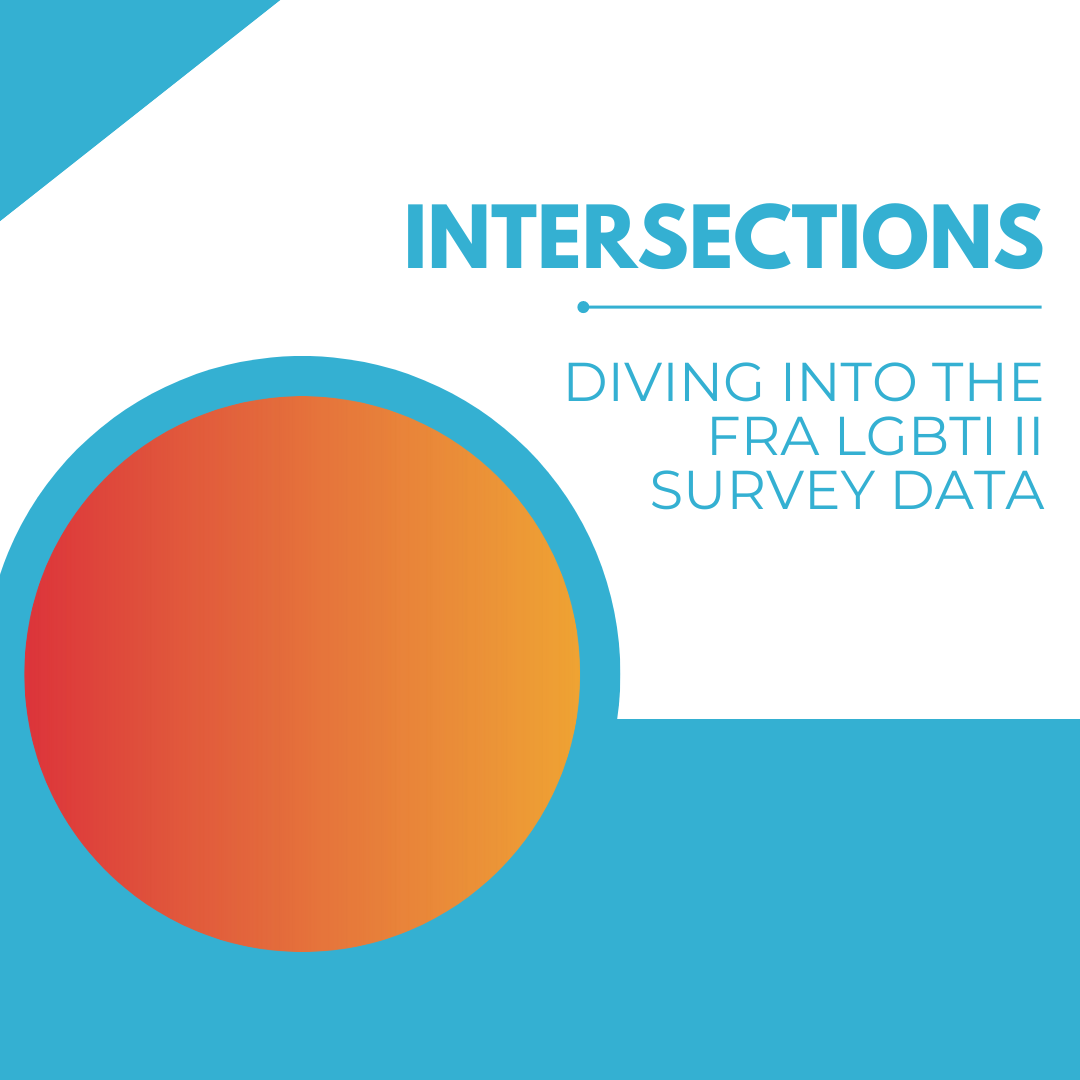
Disaggregated data, which can look deeply into the lived experiences of marginalised people, is a key demand of LGBTI and other human rights groups. With this in mind, over the last year ILGA-Europe have been partnering with a variety of NGOs in the region to analyse the FRA 2019 LGBTI Survey II data and pull out experiences of those experiencing intersectional marginalisation.
This work is based on analysis co-commissioned by ILGA-Europe and TGEU.
Intersections: The LGBTI II Survey – Youth Analysis
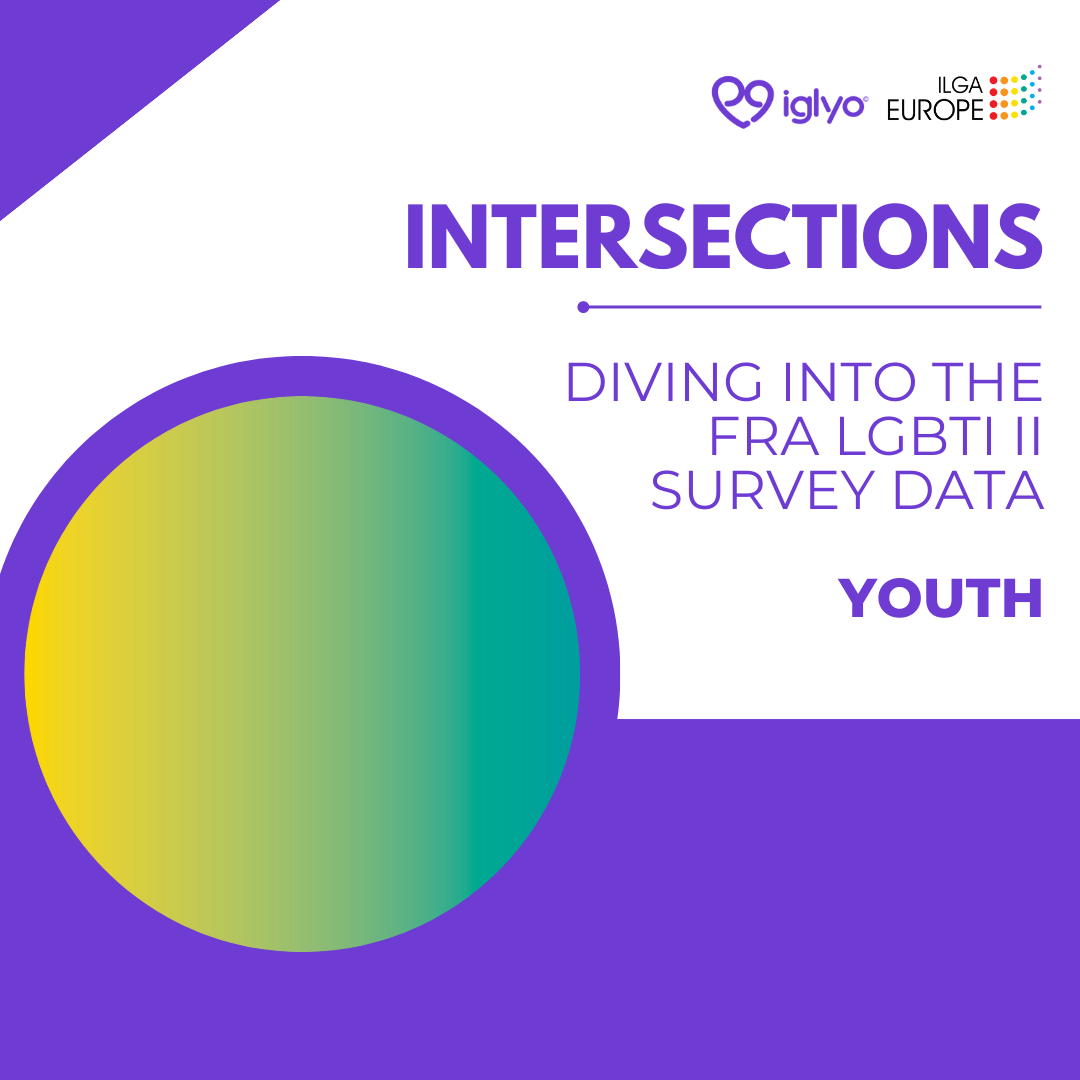
Disaggregated data, which can look deeply into the lived experiences of marginalised people, is a key demand of LGBTI and other human rights groups. With this in mind, over the last year ILGA-Europe have been partnering with a variety of NGOs in the region to analyse the FRA 2019 LGBTI Survey II data and pull out experiences of those experiencing intersectional marginalisation. This work is based on analysis co-commissioned by ILGA-Europe and TGEU.
This, our briefing on LGBTI Youth, in which we created sub-populations of respondents aged 15-24, 15-17 and 18-24, and compared them with all respondents to the survey, was carried out alongside the International Lesbian, Gay, Bisexual, Transgender, Queer & Intersex Youth and Student Organisation (IGLYO). In coming months, watch this space for further in-depth briefings on intersex people, religious and ethnic minorities, older LGBTI people, trans people, and others.
The frontline: Confronting LGBTI Youth Homelessness
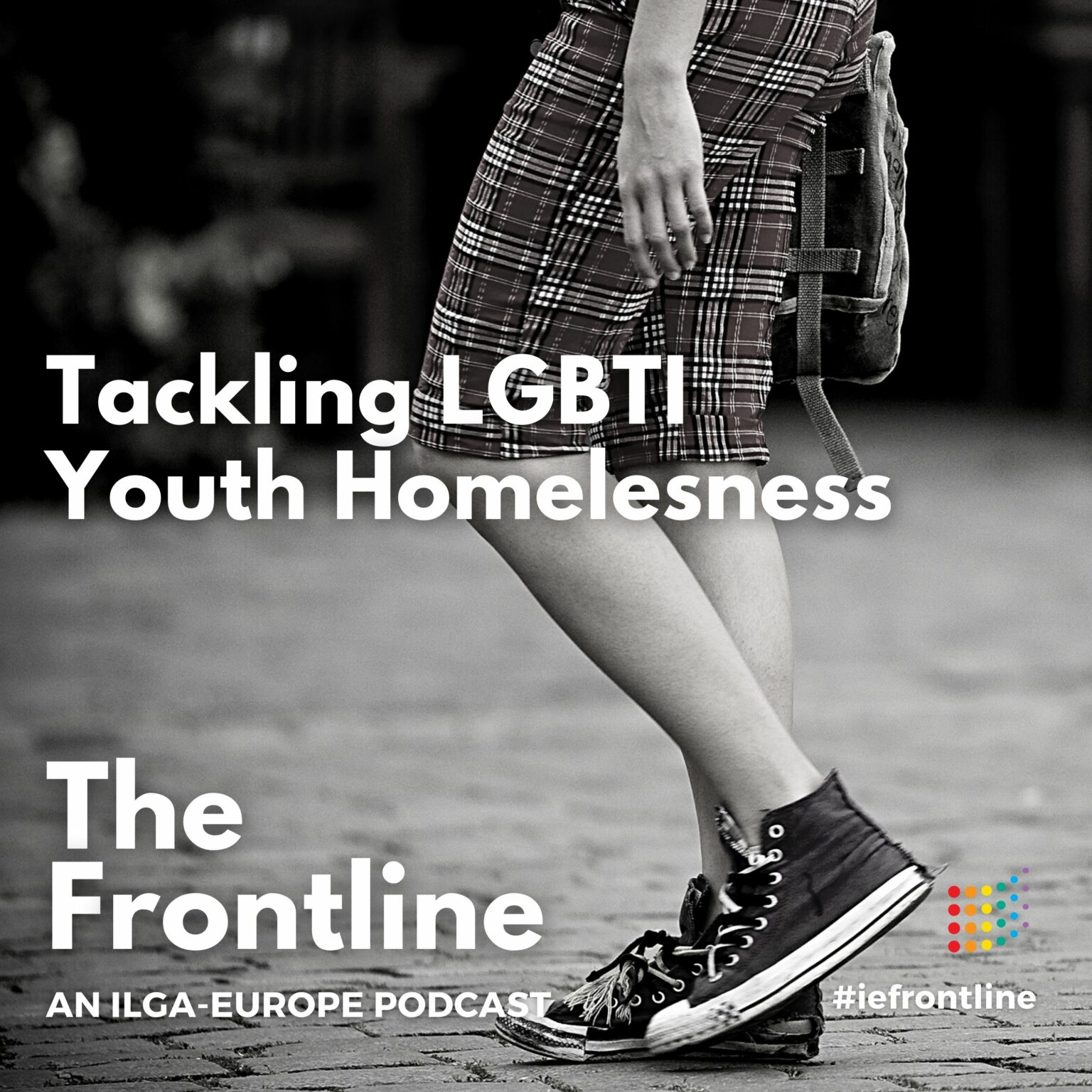
Our 2021 report, in association with Cyndi Lauper’s LGBTIQ Youth Homelessness organisation True Colors United, and the Silberman Centre for Sexuality and Gender (SCSG) at Hunter College in New York, explores the experiences of LGBTIQ focused organisations in Europe working in with young people who have experienced homelessness.
Over 60% of LGBTIQ organisations surveyed for the report said they had worked on the issue. A comparative report from the European Federation of National Organisations Working with the Homeless (FEANTSA), also finds that over 60% of homeless services organisations have dealt with young LGBTIQ people, but often without any training or support.
Our guests for this conversation about the rising issue of young LGBTI people being made homeless in Europe are author of the ILGA-Europe report, Dr Jama Shelton from True Colors United, Policy officer with FEANTSA, Robbie Stakelum, ILGA-Europe’s programmes director, Bjorn Van Roozendaal, and Silvia Magino from Association Quore in Turin, Italy, which has set up a housing project for LGBTIQ people in difficulty.
Listen below or click here to listen and subscribe to The Frontline on your favourite podcast platform.
Survey finds that LGBTIQ organisations and homeless services across Europe are dealing with large numbers of LGBTIQ youth homelessness
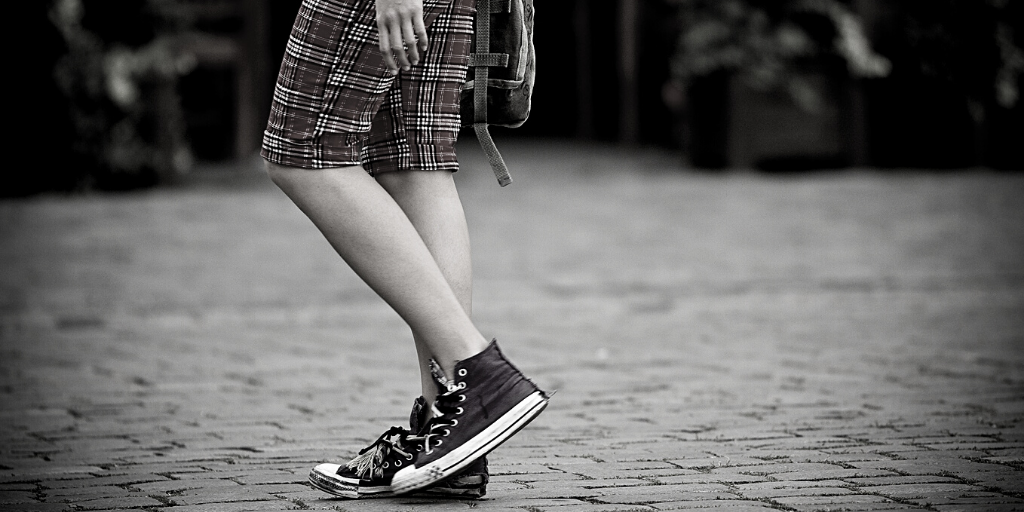
A survey of 71 organisations across 32 European countries finds that over 60% have worked with LGBTIQ youth experiencing homelessness, while homeless services lack the skills and competencies to provide safe and welcoming spaces for LGBTI people.
A report published today, based on a survey by ILGA-Europe in association with the LGBTIQ Youth Homelessness organisation True Colors United, and the Silberman Center for Sexuality and Gender (SCSG) at Hunter College, exploring the experiences of LGBTIQ focused organisations in Europe in working on the issue of LGBTI youth homelessness, points to a large prevalence of LGBTI youth homelessness across Europe, with over 60% of LGBTIQ organisations surveyed saying they have worked with young people who have experienced homelessness.
A comparative report from European Federation of National Organisations Working with the Homeless (FEANTSA) also finds that over 60% of homeless services organisations have dealt with young LGBTIQ people experiencing homelessness but often without any training or support. Nearly three-quarters (72%) of respondents indicated that no national policy exists specifically addressing the issue of LGBTI youth homelessness and over half of respondents (59%) reported a lack of governmental support for programmes that focus on LGBTI youth homelessness, including nearly half (47%) reporting a lack of funding support for such programmes.
The ILGA-Europe survey finds that the most prevalent cause for LGBTIQ youth homelessness is identity-related family conflict, as reported by 71%, while lack of institutional support and social rejection are reported by 44% as a major cause.
Just 17% of respondents said their government supports programmes targeting LGBTI youth homelessness.
According to Evelyne Paradis, Executive Director of ILGA-Europe: “Across the EU, there is a clear gap when it comes to data regarding LGBTI homeless people. And the lack of knowledge leads to a lack of targeted services, with people ending up in the streets. What is needed is for data collection to be stepped up across Europe, to better understand the phenomena. Based on improved knowledge, policy-makers need to work with service providers and LGBTI organisations in developing targeted solutions and support services to ensure LGBTI people are not left behind.”
The purpose of these surveys is to deepen understanding of the needs of LGBTI youth experiencing homelessness, how those needs are being met or not, and the successes and challenges that LGBTI-focused organisations face in working on the issue of LGBTI youth homelessness and in providing LGBTI youth experiencing homelessness with vital assistance.
Over half (56%) of respondents reported their work with LGBTI youth has been affected by the COVID-19 pandemic, with one organisation saying: “We have seen a heightening of the conflict level in domestic environments… Being unable to live their usual double-life and gain the emotional support from other peers who are also LGBTI persons with ethnic minority backgrounds, therefore increases tensions and have increased the risk of exposure among family members.”
Dr. Jama Shelton of True Colors United and Hunter College, said: “Understanding the challenges organisations face when working with LGBTI youth experiencing homelessness is a critical step in developing a comprehensive strategy for addressing the issue.”
The most commonly reported challenges for homeless services to addressing LGBTIQ youth homelessness included the organisation not knowing how to approach the topic of LGBTIQ identities; not being confident in its ability to speak about LGBTIQ issues; and fearing that some LGBTIQ young people will experience violence or abuse in the service setting if their sexual orientation or gender identity is made known.
According to Freek Spinnewijn, Director of FEANTSA: “A clear take away from our research is the need for partnership between our sectors. We need to share our joint expertise to close the existing gap between the homeless and LGBTIQ sectors, which has contributed to the hidden dimension of LGBTIQ homelessness across Europe. Through working together we can provide better and safer services for LGBTIQ youth ”
The ILGA-Europe report provides a baseline of knowledge regarding the experiences of LGBTI-focused organisations in Europe and Central Asia working on the issue of LGBTI youth homelessness. The findings suggest multiple opportunities for resource development, further research, and collaboration.
Evelyne Paradis concluded: “Together with authorities, both the LGBTI and homeless sector have a role to play in combating LGBTI people experiencing homelessness. The intersectional approach to this project is providing the ground-work for cooperation, identifying the scale of the problem and naming key obstacles to supporting LGBTI youth. The global COVID-19 crisis has brought so many vulnerable people in our society into focus, and we cannot look away. It is the responsibility of the European Commission and member states to propose meaningful action on how to tackle the crisis of inequality and to truly include LGBTI people in their measures and policies tackling homelessness.”
Background
Housing instability and homelessness impact LGBTI youth and young adults across the globe. In 2017, True Colors United began working with ILGA-Europe to organize a session on LGBTI youth homelessness at their annual conference, held in Warsaw, Poland. Since that time, the organisations have collaborated to provide workshops at ILGA-Europe’s annual conferences and worked together with The European Federation of National Organisations Working with the Homeless (FEANTSA) to better understand the realities of LGBTI youth homelessness in Europe.
True Colors United, FEANTSA and ILGA-Europe have worked together to create a plan for conducting research that would establish a baseline of understanding about LGBTI youth homelessness across LGBTI focused organisations and inform the development of resources to aid in addressing the challenges that organisations face when working on this critical issue. The survey, developed by ILGA-Europe and True Colors United and in collaboration with the Silberman Center for Sexuality and Gender at Hunter College, is the first step in that process.
Perceptions: Addressing LGBTI Youth Homelessness in Europe and Central Asia
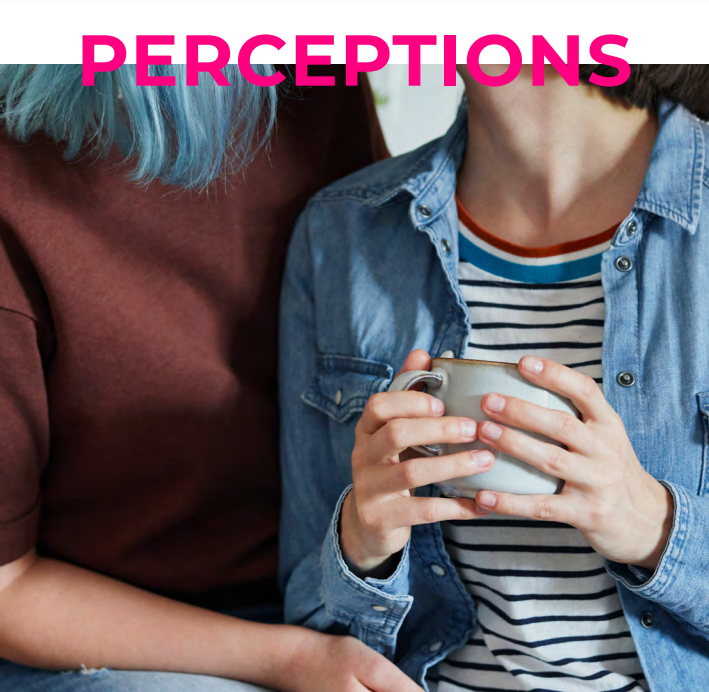
In April 2021, ILGA-Europe in association with the LGBTIQ Youth Homelessness organisation True Colors United, and the Silberman Center for Sexuality and Gender (SCSG) at Hunter College published a report based on a survey exploring the experiences of LGBTIQ focused organisations in Europe in working on the issue of LGBTI youth homelessness. It points to a large prevalence of LGBTI youth homelessness across Europe, with over 60% of LGBTIQ organisations surveyed saying they have worked with young people who have experienced homelessness.
A comparative report from European Federation of National Organisations Working with the Homeless (FEANTSA) also finds that over 60% of homeless services organisations have dealt with young LGBTIQ people experiencing homelessness but often without any training or support. Nearly three-quarters (72%) of respondents indicated that no national policy exists specifically addressing the issue of LGBTI youth homelessness and over half of respondents (59%) reported a lack of governmental support for programmes that focus on LGBTI youth homelessness, including nearly half (47%) reporting a lack of funding support for such programmes.
“Knowledge is Power!” Cyndi Lauper Shows her true colors on LGBTIQ youth homelessness
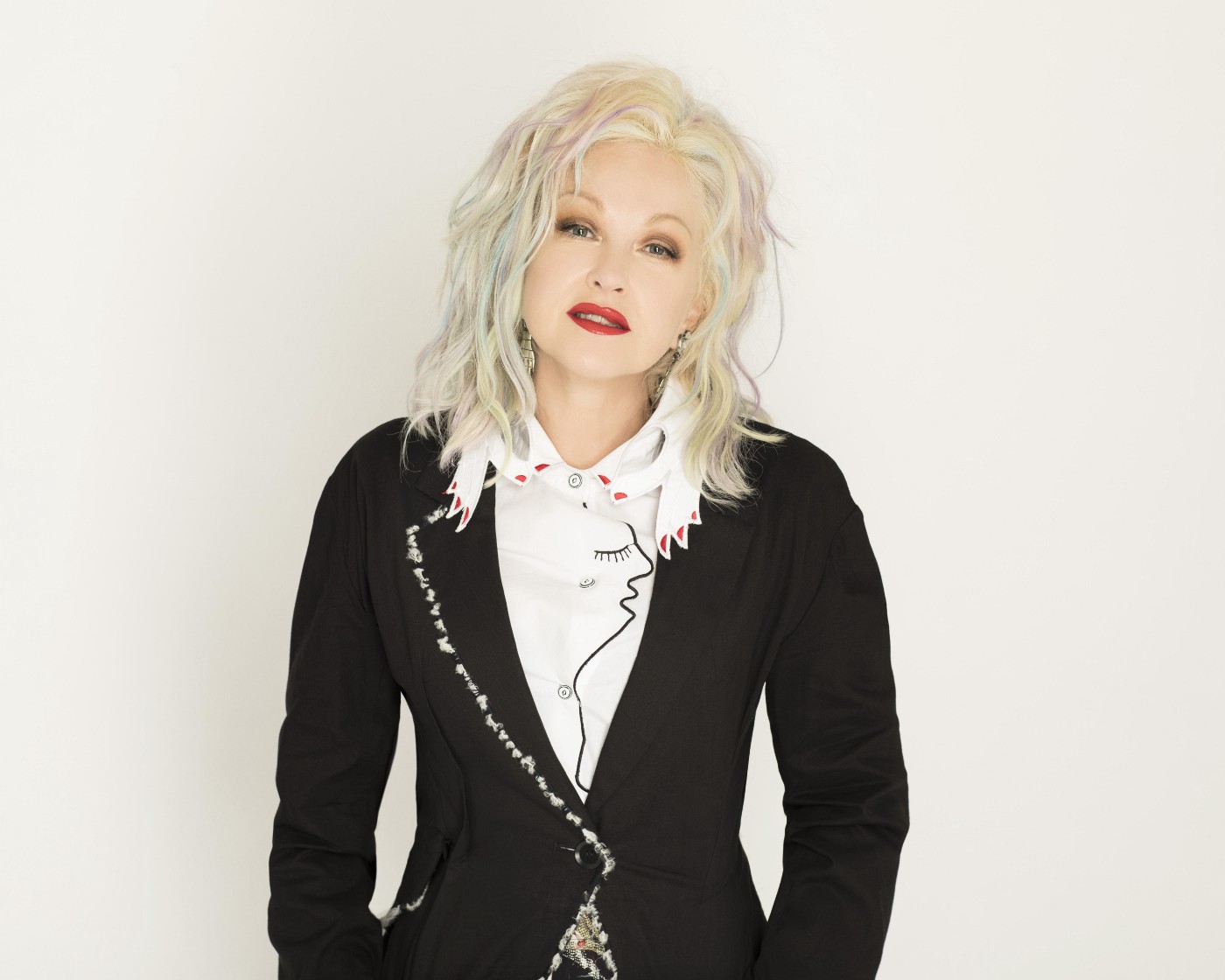
“We need your help to change the lives of LGBTIQ homeless young people,” says superstar Cyndi Lauper in an exclusive interview about how her organisation, True Colors United, is teaming up with ILGA-Europe to tackle the unacceptable problem of LGBTIQ youth homelessness in Europe.
Since her string of mega-hits in the 80s, from ‘Girls Just Wanna Have Fun’ to ‘I Drove All Night’, Cyndi Lauper has grown from pop ingénue to cultural legend, and along the way she’s secured her place as a timeless queer icon too. She fully became aware of what her music meant to the LGBTIQ community in the years following the release of her 1986 single, ‘True Colors’. The letters she received ever since, about the song helping LGBTIQ people come to terms with themselves, gave shape to her activism. Indeed the song provided the name for the foundation she co-created in 2008 to tackle the problem of LGBTIQ youth homelessness in America, True Colors United.
Now True Colors United is teaming up with ILGA-Europe to help tackle the growing problem of LGBTIQ youth homelessness in Europe and Central Asia, and the first step is to get the real picture from LGBTIQ organisations on their experiences in dealing with the issue.
Here, Cyndi tells us the reasons she’s so passionate about coming to a time when no young LGBTIQ person finds themselves without a home, and just why it’s so important that LGBTIQ organisations across Europe and Central Asia help lead the way.
Hi Cyndi, and thank you for joining us! It’s hard to believe that it’s 12 years since you co-founded True Colors United. What moved you to set the organisation up?
I am a friend and family of the LGBTIQ community and from where I come from you stand up for your family and friends when they are under attack. I am also a parent and someone who experienced homelessness when I was young. When I learned that up to 40 per cent of youth and young adults experiencing homelessness in America were LGBTIQ, I had to step up and do something. Having a safe and stable place to call home is a basic human right and to be denied that because of who you are is unacceptable. We are better than this, especially when youth homelessness is a fixable problem.
What do LGBTIQ young people experiencing homelessness in the US and Europe have in common?
While we do know some things that young people have in common, we have more questions than answers about the experiences of LGBTIQ youth and homelessness in Europe. That is why this survey is so important. We do know that LGBTIQ youth in both the US and Europe experience homelessness at higher rates than non-LGBTIQ youth and that family conflict is a key factor… but there are still many questions about what the barriers are for LGBTIQ youth getting the help and support they need in Europe, why they are experiencing homelessness beyond family conflict, what their experiences are while they are homeless and seeking the support they need, and most importantly, what young people themselves say they need.
How do you think homelessness, and specifically homelessness in young LGBTIQ people, can be stopped?
First and foremost, we need to work with LGBTIQ+ young people who have experienced homelessness to come up with and put the solutions in place that will work. LGBTIQ+ youth are the experts of their own experiences, we need to listen to and work with them. It is essential. We also need to ensure that any support and help they seek is safe, welcoming and inclusive.
And, we need more data… we need information. We need to understand the scope of the problem and the barriers that keep service providers, communities, and countries from addressing the issue. Eight years ago in America, we had hardly any data. Then we did the same type of survey we are asking your members to fill out now. It fundamentally changed things… we finally had some strong information to convince communities and our government to put funding, programs and policies in place to really start fixing the problem and ensuring LGBTIQ youth get the help they deserve.
More research followed and we now have more data than we have ever had before and more support for youth experiencing homelessness. While we still have a long way to go, we have also come a long way and it all started with having information.
In what ways can the work of LGBTIQ organisations help young people experiencing homelessness?
LGBTIQ+ organisations are key drivers of change for the community around the globe and they are important leaders in ending LGBTIQ youth homelessness in Europe. Whether it is providing direct services, like housing and counseling, or advocating for policies, funding, and programs from their governments, LGBTIQ organisations play a crucial role.
Another way is through helping to train those programs serving youth who are experiencing homelessness in their countries (if they exist) to be safe and inclusive, and build partnerships with those organisations to ensure that LGBTIQ youth are getting the help they need. There is no shortage of things that LGBTIQ organisations can do and the survey will help identify some additional ways they can take part.
Why do you think research can change the lives of LGBTIQ homeless young people?
Knowledge is power! If we do not understand the true scope, causes, and impact of LGBTIQ+ youth homelessness, we cannot fully support young people and figure out what is working and what is not working in ending the problem.
What would you say to the organisations filling this survey?
I know you have so much you are dealing with right now, especially in light of the pandemic, but I can promise you that change will happen if you take the time to fill out the survey. We will all have the information we need to start making a greater difference. I speak from experience. If the 400 organisations in America did not fill out the survey we did in 2012, and again in 2015, we would not have been able to make the progress we have been able to make so far there.
LGBTIQ and Homeless: One Young Person’s Story
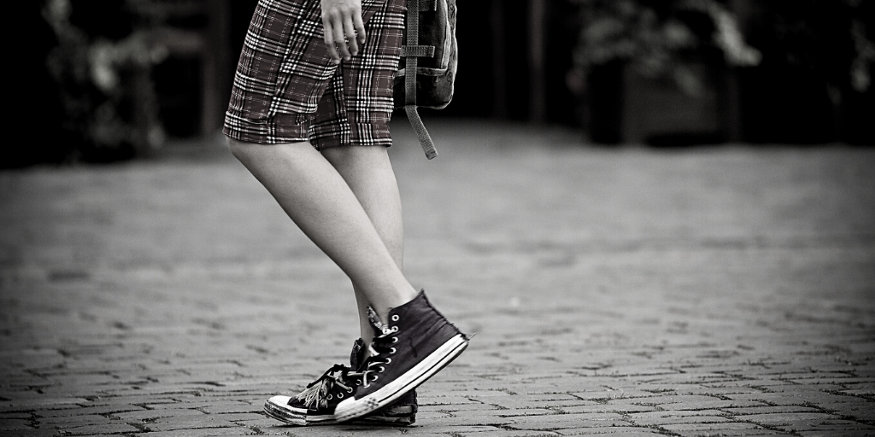
Young LGBTIQ people are being made homeless every day in Europe. To tie in with our survey for LGBTIQ organisations about their experience of youth homelessness, a young person from Slovenia tells their story of self-discovery, and how bullying in their family forced them to run away.
became homeless at the age of 18. At the time, I was living in Ljubljana, the capital city of Slovenia, with my parents and two older brothers. I was going to tourism and culinary school, but it was not my passion. For as long as I can remember, my passion has been art and music, but my family didn’t accept that.
My mother is a hard-working woman who took care of all four of us, especially the men in the family. She worked as a waitress and after work she immediately came home to cook and clean. I always felt sorry for her; I still do. She was never complimented by my father, who beat her up often, and put her down.
My father is an alcoholic in denial. He eats pork and never goes to the Mosque, but always proudly calls himself a man of faith. He had a hard life as a child. His own father was a cold-blooded dictator of a family that left when war started in Yugoslavia. My father ended up in the military. He was just 18 when he had his first child. I’m not trying to make excuses for his actions, but I guess I comfort myself with these facts; the reasons why he turned into an alcoholic bully.
“I didn’t really fight back. I just tried to get away.”
One day, I came home from the city to find my father was brutally drunk. He started yelling at me, shaming my appearance and shouting things like: ‘’Look, you slut, even if you are 18 now, while you are living under my roof, you can’t go out anytime you like. You should stay at home, cook and clean for me!”
I tried to leave the room, but he wouldn’t let me. In his mind, leaving a room in the middle of the fight is a disrespectful thing to do. So, for the first time he got physically aggressive towards me. I didn’t really fight back; I just tried to get away.
I opened the window and yelled at the top of my lungs for help. Of course, the neighbors didn’t react. I guess over the years they got used to the screaming from when my mom was being beaten up. My father pushed me away from the window and closed it. He started laughing at me, as if to say, ‘no one is coming to help you’.
At that moment I got really scared. I grabbed the first thing I saw. It was this heavy glass candy bowl on the dining table. I aimed it towards his head, but I couldn’t throw it at him. The next thing I remember, I was lying on the floor covered in blood.
All the time he had been letting out his anger on me, I was still holding the glass bowl. It eventually broke and cut my arm badly.
For the record, my mother was present during all this time. She was cleaning the dishes and just being quiet. When she saw my cut, she said to my father, “You can stop now. Her arm is bleeding too much.”
I immediately picked myself up and ran towards the door. Before I stepped outside I told my mom how disappointed I was and asked her how could she let this happen? I ran barefoot out of the apartment, seeking help. A stranger passing by noticed me. She took me to the nearest hospital where I got the blood cleaned off my face and body, and a few stitches in my arm. The nurses wanted to know how I got my injuries. I was afraid to tell them, because at that time I saw my father as somebody who was stronger than the law. I eventually explained everything to them under the condition that they wouldn’t call the police, although in Slovenia there’s a law that states that if a medical operative receives a patient who was abused by a family member, they are obliged to report it.
“When I arrived at the LGBT+ camp, I was still feeling very vulnerable.”
Later that night I went to sleep at one of my friends’ houses. Her parents understood the situation but still encouraged me to go back home. I didn’t feel that was a safe thing to do, so I called another friend and asked if I could stay at their place for a while. They explained that they were leaving for an LGBT+ camp that day, and said that I should come with them because I could sleep and eat there for free. I only needed 20 euro for the bus ticket.
At first I hesitated a bit because I wasn’t anywhere on the LGBT+ spectrum and I felt like I don’t belong there. I didn’t want to invade people’s space. But my friend convinced me to go. I called my mother and asked her for the bus fare, explaining that I would be gone for a couple of days because I needed some space from my father.
When I arrived at the LGBT+ camp, I was still feeling very vulnerable, crying a lot and trying to forget about everything that happened at home. The people there were all very welcoming. They asked me all sorts of questions, things I had never asked myself before and it made me feel important.
We all sat in a circle and the first workshop started, an introduction to the camp, explaining the rules, schedule and introducing ourselves. It sounds crazy, but I felt safer sitting in this circle than I had in my entire life. I remember looking around the room and admiring all these people. I was wondering about their pasts. How did they get here? Where were they going after camp? Could we be friends? Would they judge me because I wasn’t like them?
After the workshop, I went to get some tea. One guy from my room joined me and we were making small talk. “Oh, I see that you have a bandage on your palm,” he said. “What happened?” I lied about being clumsy. I was ashamed of what had really happened.. I couldn’t go ahead and say: “I’m actually at this camp because I don’t feel safe at home”.
We kept on talking and at one point my new roommate asked: “What’s your sexual orientation?”
“Something in my soul clicked.”
I felt really stupid not knowing what that actually meant. He politely explained, asking, “Well, who do you prefer, in a romantic or sexual way. Do you prefer guys, girls, maybe both?”
I remember thinking: “Shit. Now Is the moment when people start realising I am the only straight one here, but I still gave an honest answer.
“Well, I had two boyfriends. And I kissed a few of my female friends. But we were just messing around.”
“So you are bisexual?”
Again, I wasn’t sure what that meant.
“You know, you like boys and girls,” he explained.
“Oh, no,” I protested. “You misunderstood me. I like boys. Yes, I kissed some girls, but I didn’t feel anything romantic towards them.”
Later on that night I got the chance to be alone with my thoughts. Something in my soul clicked and explained the parts of me that I never really understood: I realised that I was somewhere on the queer spectrum and that I always had been. The only thing that was stopping me from understanding this before now was that I never had a safe space before. My family was homophobic and I was so scared of that, I had never let myself even think about the possibility of being queer.
I will not tell you about all the details of my life after that. Not because I don’t want to share it, or because it’s not important. It’s just too much to explain. But coming out to myself was both the best and worst thing that ever happened to me. It was like a long-missing piece of a puzzle had been finally put in place and soon my self-confidence began to grow. At the same time I knew that being queer, a lot of my privileges were going to disappear. And the worst part was losing a lot of friends and family members because of it.
“I was forced to run away from home.”
Two weeks after the LGBT+ camp, I was forced to run away from my home. The bullying in my family didn’t stop, so it was only logical that I couldn’t live with them anymore. I was queer, and they would kick me out sooner or later. After that, I was living illegally in student dorms with my friends. Then I went to a homeless crisis center and then a safe house. I was basically moving a lot, until I found a job and settled in a new home with a gay couple.
When I think back on my emotional effect of being queer and homeless, I can say that I’m grateful for all the bad days because it got me to the point where I am now. Of course, my mental health suffered. I always felt like a burden to people because I had nowhere else to go and sleep. At the same time I was fighting with my internalised homophobia. On the other hand, I never felt more free. I was always surrounded by kind and accepting people. The LGBT+ community helped me a lot with everything, with mental support, finding a job and finally, finding a safe home.
For all the love and support I’ve received, I am forever grateful.
Major survey on LGBTIQ youth homelessness in Europe launched
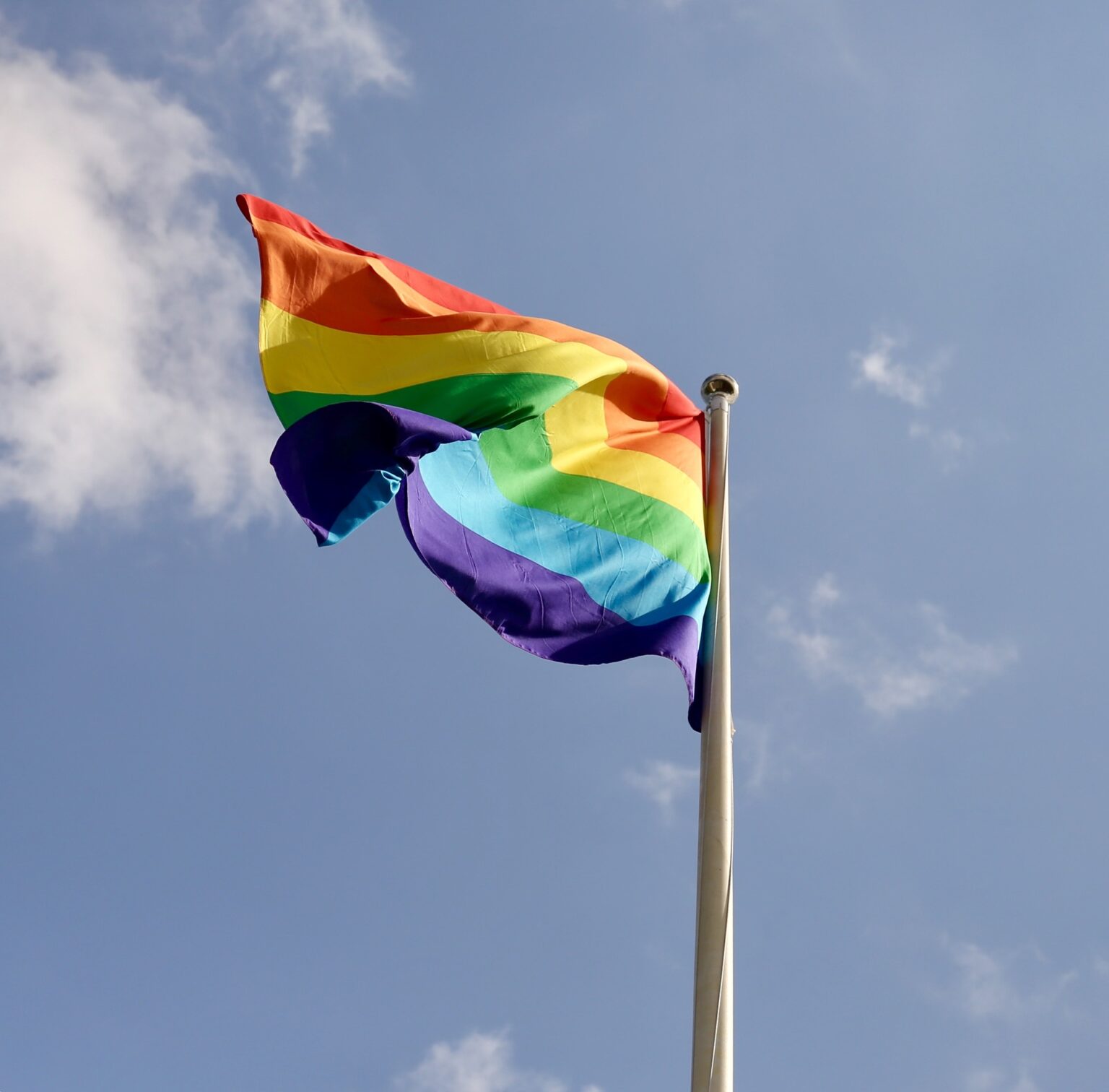
A new survey aims to guage the experiences of European and Central Asian groups and organisations when it comes to LGBTIQ youth homelessness.
Young LGBTIQ people are experiencing homeless every day, often rejected by parents, families and society because of their sexuality or gender identities. Yet, this is a much under-addressed issue in the European and Central-Asian region.
ILGA-Europe are partnering with key actors in the sector to raise awareness, increase collective knowledge and ultimately explore potential avenues for responses from the LGBTI movement to the problem. These partners include the international LGBTIQ youth homelessness organisation, True Colors United, the European Federation of National Organisations Working with the Homeless (FEANTSA) and the Silberman School of Social Work at the City University of New York.
Today, ILGA-Europe, in association with these partners, launch a survey to hear from LGBTIQ groups and organisations what their experience is when it comes to LGBTIQ youth homelessness, what initiatives they have taken, and most of all, what more is needed to further engage in such work.
This is part of ILGA-Europe’s broader effort to mobilise interest, knowledge and resources to tackle LGBTIQ youth homelessness in Europe and Central Asia. By taking this survey organisations will help ILGA-Europe in advocating for more resources and policies, in providing tools, developing knowledge, and bringing expertise to meet the needs of LGBTIQ young people who have become, or are at risk of becoming homeless.
According to Evelyne Paradis, Executive Director at ILGA-Europe: “By taking this survey, LGBTIQ organisations can help us do much needed work with our partners to address the issue of LGBTIQ youth homelessness in Europe and Central Asia. Knowledge of their experiences in addressing homelessness will inform our work with governments and funders, so that one day no young LGBTIQ person finds themselves without a home.”
The survey can be found here, and it takes approximately 15 minutes to complete.
Join webinar on LGBTIQ youth homelessness and the role of LGBTIQ organisations
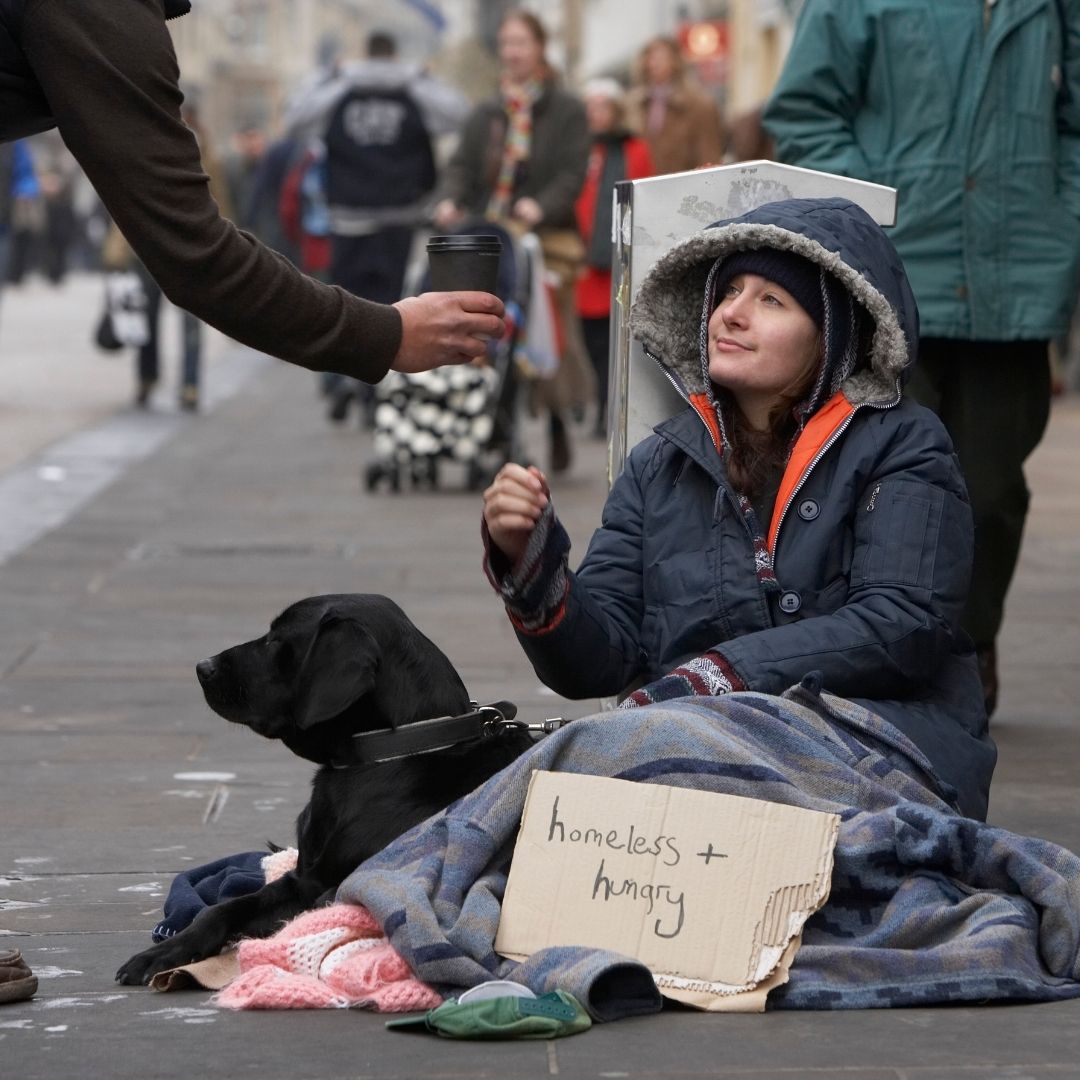
Join us for the webinar An introduction to LGBTIQ youth homelessness and the role of LGBTIQ organisations on 27 September 2019 at 13.00 CEST.
LGBTIQ homelessness is a much under addressed issue in the European and Central-Asian region, a reality that needs to change.
As part of our intersectionality work and in an effort to address socio-economic inequalities and their impact on LGBTIQ people, ILGA-Europe are increasingly engaging around the issue, and more specifically on LGBTIQ youth homelessness.
By partnering with key actors in the sector and creating spaces for peer learning and exchange, we want to raise awareness, increase our collective knowledge and ultimately explore potential avenues for responses from the LGBTIQ movement.
During this webinar we will hear from three partners and friends of ILGA-Europe: FEANTSA, European Federation of National Organisations Working with the Homeless; Ljubljana Pride Association, active at the grassroots level in Slovenia specifically on youth LGBTIQ homelessness; and True Colors United, US based organisation implementing innovative solutions to youth homelessness that focus on the unique experiences of LGBTIQ young people.
What does the issue look like? What are challenges around service provision and what can LGBTIQ organisations and groups do? What are pressing needs and what are examples of tools, resources and strategies available?
Our guests will touch upon these elements to provide an introduction to LGBTIQ youth homelessness and to reflect on what role LGBTIQ organisations and groups can play.
Registration
Registration is now closed.
Presenters
Simona Mursec is the President of Ljubljana Pride Association since 2015. In her 20 year long career as an activist, youth political representative, human rights education trainer and facilitator of policy processes she has worked with numerous international and interregional institutions and NGOs from all over the globe. She is a fierce human rights advocate and practitioner and her main fields of interest are rights of minorities and marginalised groups, youth and youth policy processes, social inclusion and antiracism work. Ljubljana Pride Association has developed into a strong intersectional and anti-racist organisation under her auspices and leadership. Simona is currently employed at WeMove Europe, a European multi-issue online campaigning organisation, where she works as their finance manager.
Robbie Stakelum works for FEANTSA, the EU Umbrella Group of Homeless Organisations, and leads on their work on LGBTIQ & youth homelessness, where he also coordinates a network of young professionals working towards the eradication of youth homelessness in Europe. He is a Course Director with the Council of Europe delivering the upcoming 5 day course on LGBTIQ homelessness in Budapest and also works as a professional and life coach.
Gregory Lewis – A longtime advocate for lesbian, gay, bisexual, transgender, queer, and questioning (LGBTQ) equity, Gregory Lewis worked with Cyndi Lauper to launch True Colors United in 2008 and has served as its executive director since its founding. Under Gregory’s leadership, True Colors United has grown into the leading national organization implementing innovative solutions to address youth homelessness by focusing on the unique experiences of LGBTQ youth. Gregory built the organization from the ground up, creating the infrastructure and development streams critical to its success. Gregory also served as an inaugural co-chair for four years of A Way Home America, a national initiative to build the movement to prevent and end homelessness among young people in the United States.
Watch a recording of the webinar
Be Yourself – new video by Single Step
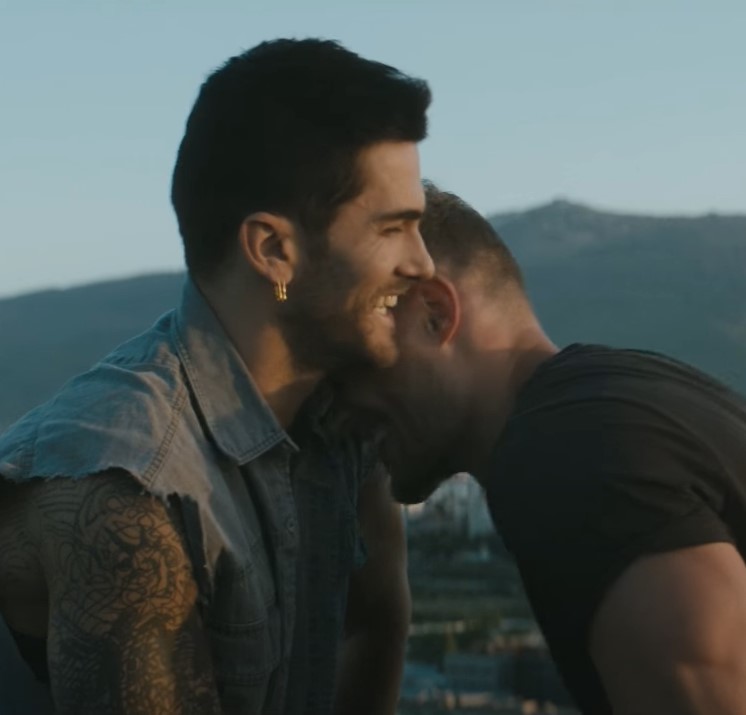
One of our member organisations in Bulgaria, Single Step, have launched a new motivational video.
The video was created to inspire young people around the world to be true to themselves.
Produced thanks to the generous pro bono collaboration of a number of international professionals, companies and partners, ‘Be Yourself’ is an “artistic manifestation of courage, self-expression, human connection and community”.
The creators of the video have decided to provide it royalty-free, pro bono, to any LGBTI group or organisation which may like to use it locally, in order to inspire young LGBTI people.
Watch the video
- Please contact Ivan Dimov, the founder of Single Step (ivan[at]singlestep.bg) if you are interested in using the video to promote our shared cause and your organisation locally.
Expression Abridged – new report from IGLYO
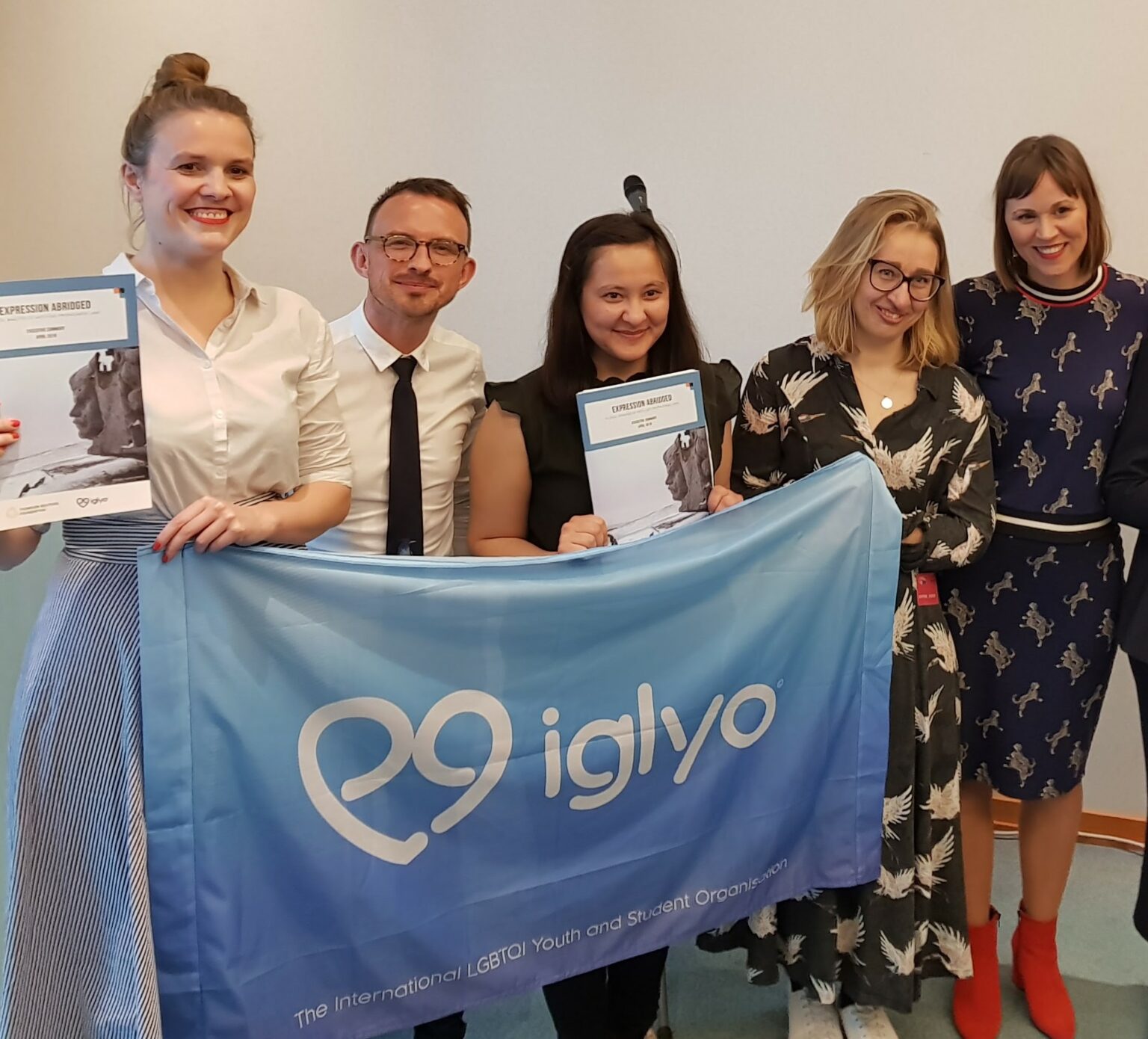
iGLYO’s latest report “Expression Abridged” is essential reading for LGBTI activists, researchers, academics and the media alike.
Officially launched at the European Parliament in Brussels on 24 April, the report contains a thorough legal analysis of the anti-LGBTI ‘propaganda’ laws that exist or have been proposed in Europe and Central Asia.
IGLYO’s Capacity Building Officer Tudor Kovacs pointed out that Expression Abridged is not only a useful resource, but can also be a valuable tool for activists in planning their activities or when challenging opponents who try to enforce or submit these laws for inclusion on the legislative agenda.
Everyone at the event was reminded that the Russian federal legislation, enacted in 2013, might be the most infamous of the so-called ‘anti-propaganda’ laws but it is not the only one. A bill seeking to introduce even harsher penalties is still being considered by Kyrgyzstan’s’ parliament – a fact that LGBTI activists Nadira and Anastasia underlined at the launch.
- You can access the Expression Abridged executive summary here.
Intergenerational Dialogue with(in) the LGBT Community
This report is the final outcome of the Age Project in which the findings – in particular the outcomes of the two round tables and therefore the contributions made by participants – are presented.
Thus, the goal of this report is not to make concrete policy recommendations but instead to depict where we currently stand, which issues need to be addressed and how these issues may be best tackled. As with all projects which shed light on the need for further research, a secondary, but nevertheless important goal of this report is to stimulate thought with regard to continuing the work that has begun.
Suicidality among lesbian, gay, bisexual and transgender youth
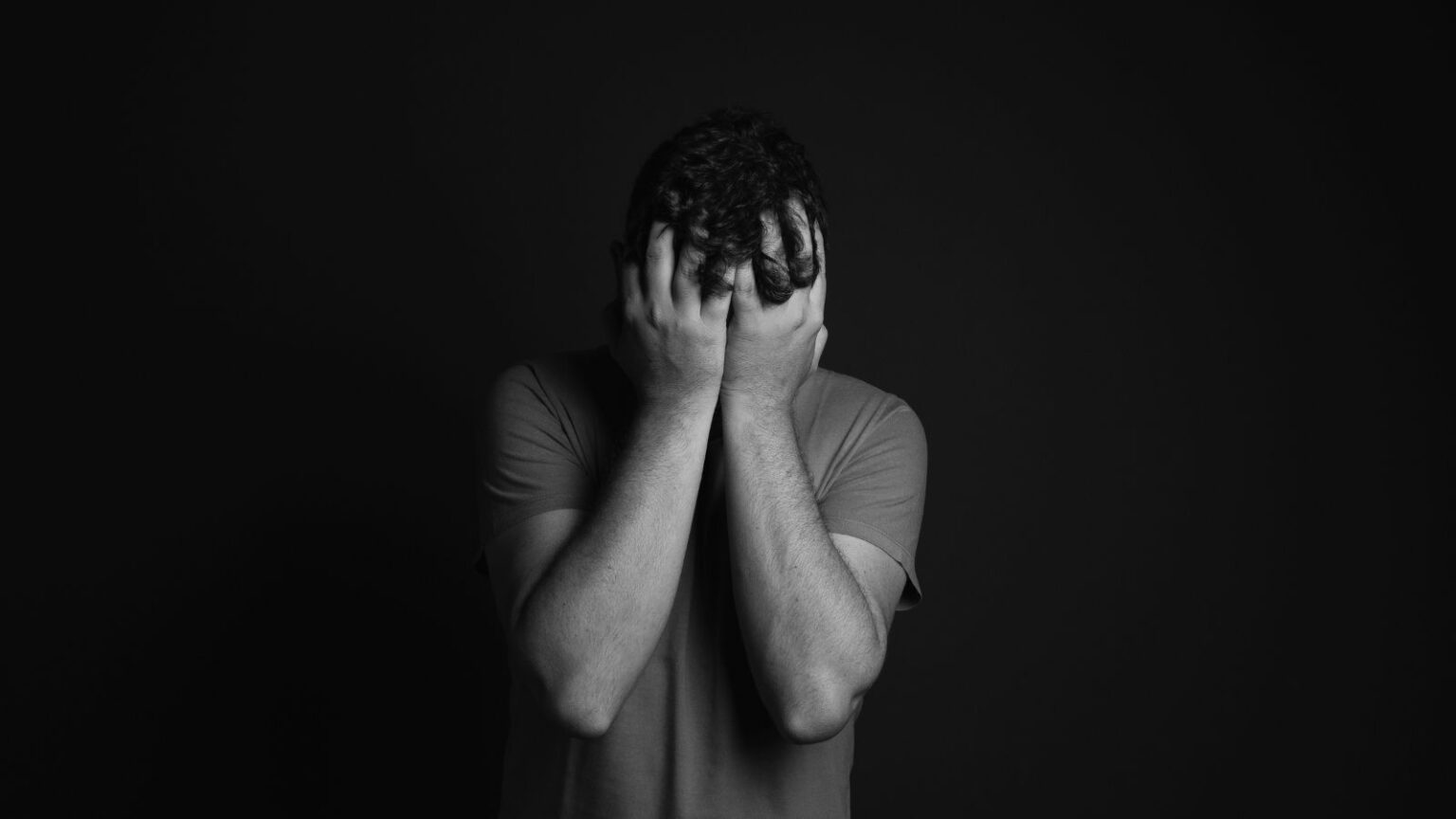
Report by ILGA-Europe to the Social, Health and Family Affairs Committee of the Parliamentary Assembly of the Council of Europe
Social exclusion of young LGBT people in Europe
Young lesbian, gay, bisexual and transgender (LGBT) people across Europe face discrimination and exclusion in their everyday life. They experience estrangement from family, bullying and marginalisation at school, which can lead to such problems as underachievement and school drop-out, low self-esteem and mental ill-health. These in turn have a negative impact on the capacity of young LGBT people to manage the transition from school to work and to become confident and independent adults who can contribute to society.
This joint report by IGLYO and ILGA-Europe is a response to the need to bring attention to the social exclusion of young LGBT people in Europe and to put the issue on the agenda of national and European policy-makers. This publication highlights the effect that discrimination on the ground of sexual orientation and gender identity has on young LGBT people’s capacity to be socially included and to become active citizens. It also raises awareness about the multiple forms of discrimination that interact to put young LGBT people at a particular disadvantage and risk of exclusion.
Published in April 2006 by ILGA-Europe and IGLYO.